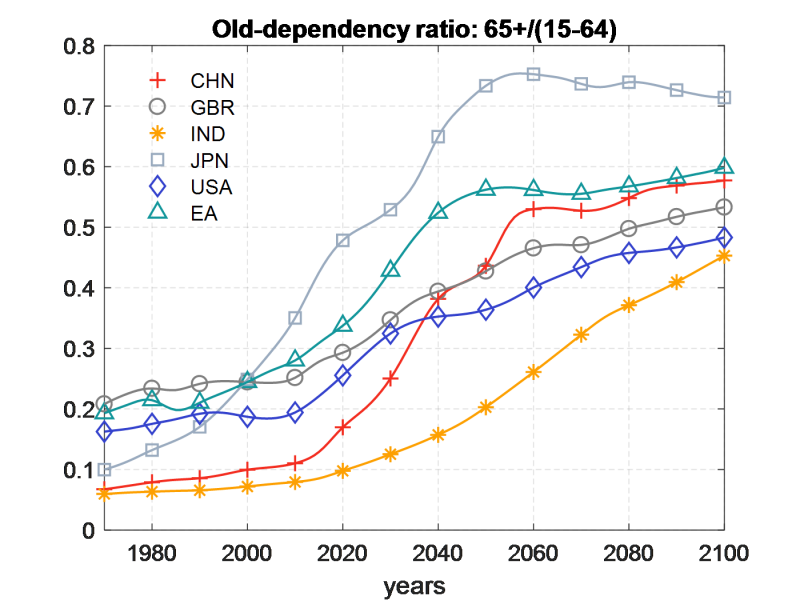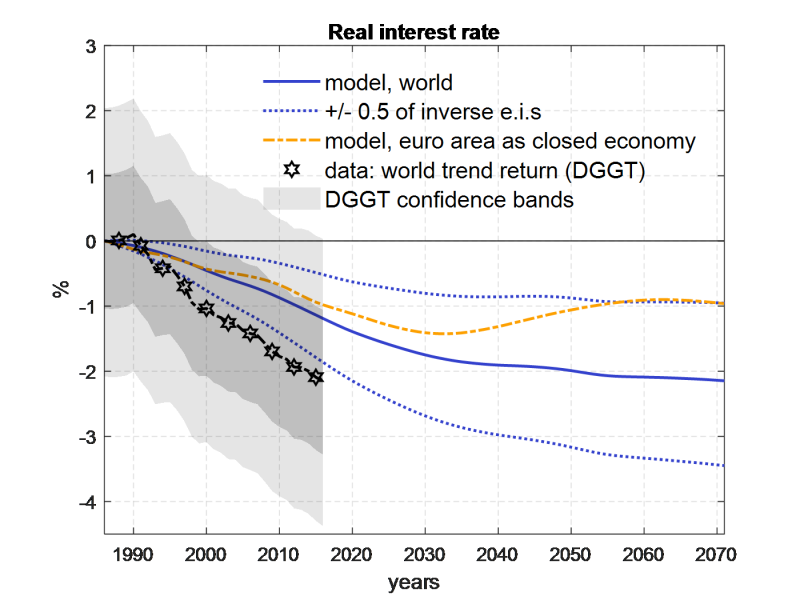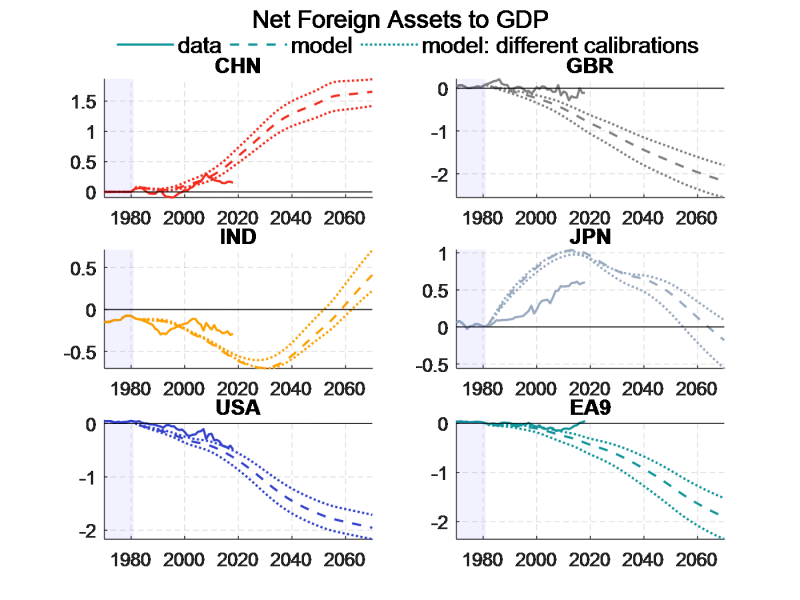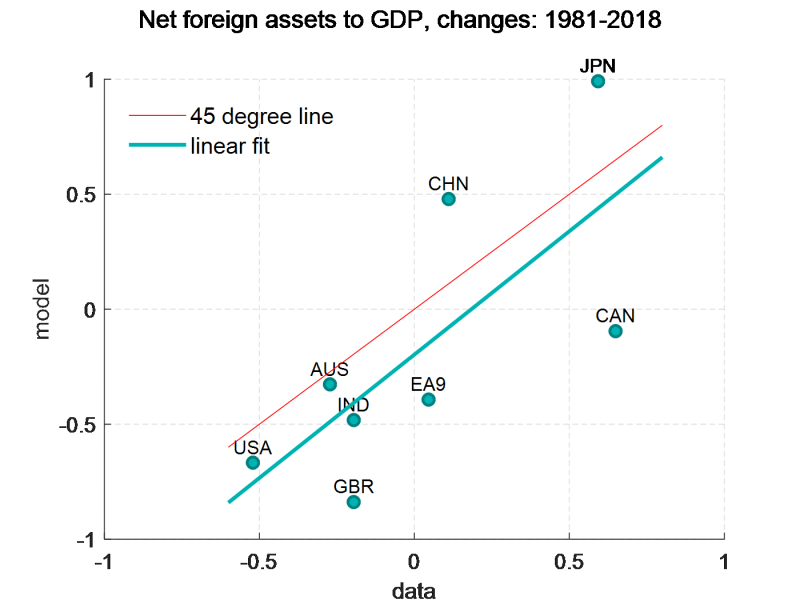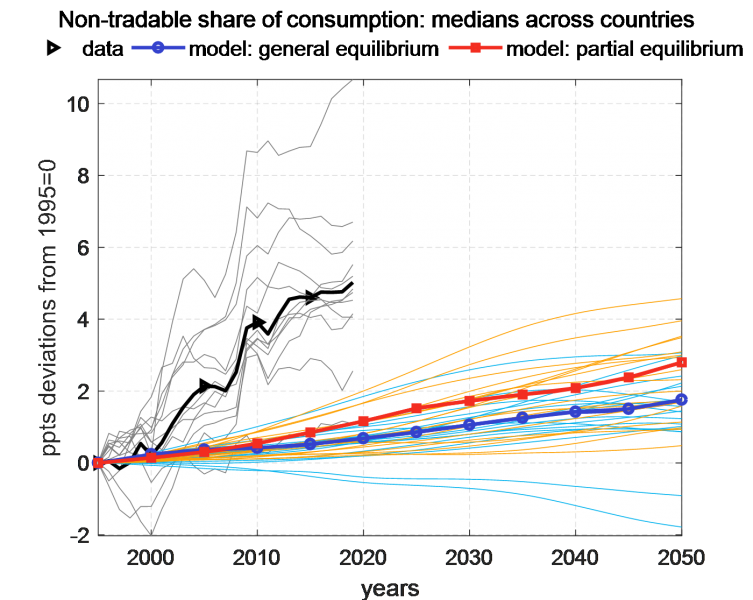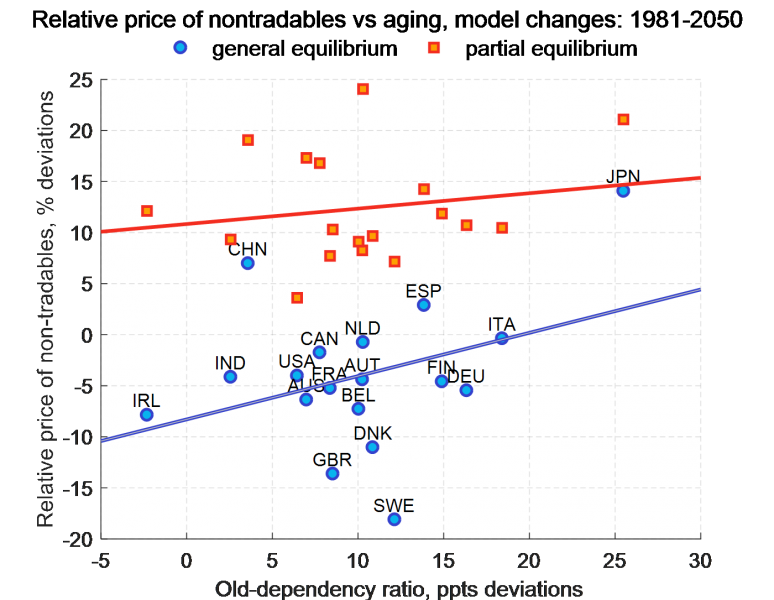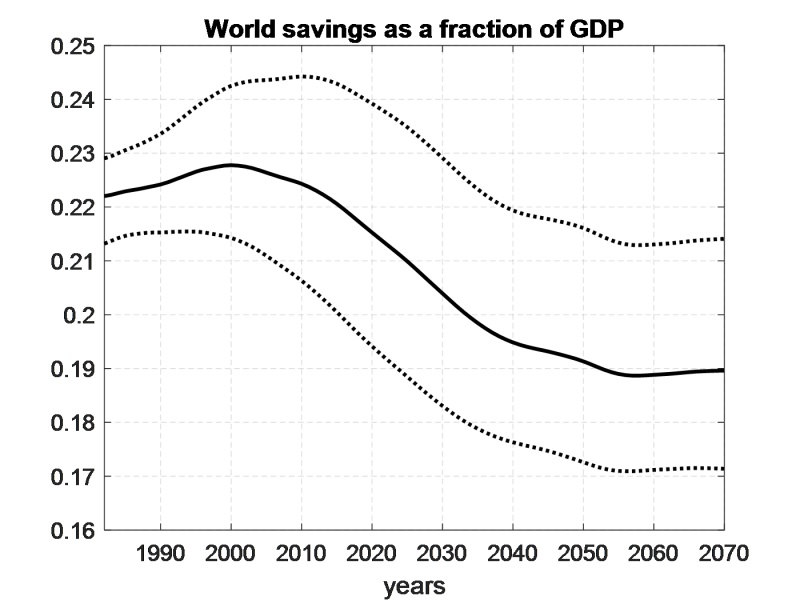References
Acemoglu, D., and Restrepo, P (2021): “Demographics and Automation”, The Review of Economic Studies, forthcoming.
Auclert, A., Malmberg, H., Martenet, F., & Rognlie, M. (2021): “Demographics, Wealth, and Global Imbalances in the Twenty-First Century”, NBER Working Paper No. 29161.
Bernanke, B. S. (2005): “The global saving glut and the U.S. current account deficit”, Speech 77, Board of Governors of the Federal Reserve System (U.S.). Homer Jones Lecture.
Basso, H. S., and Jimeno, J. F. (2021): “From secular stagnation to robocalypse? Implications of demographic and technological changes”, Journal of Monetary Economics, 117, 833-847.
Bielecki, M., Brzoza-Brzezina, M., and Kolasa, M. (2020): “Demographics and the natural interest rate in the euro area”, European Economic Review, 129:103535.
Chirinko, R. S. (2008): “σ: The long and short of it”, Journal of Macroeconomics, 30(2), 671-686.
Cravino, J., A. A. Levchenko, and M. Rojas (2021): “Population aging and structural transformation”, American Economic Journal: Macroeconomics, forthcoming.
Del Negro, M., Giannone, D., Giannoni, M. P., and Tambalotti, A. (2019): “Global trends in interest rates”, Journal of International Economics, 118(C):248–262.
Eichengreen, B. (2014): “Losing interest”, Project Syndicate, April 11.
Eggertsson, G. B., Mehrotra, N. R., and Robbins, J. A. (2019): “A Model of Secular Stagnation: Theory and Quantitative Evaluation”. American Economic Journal: Macroeconomics, 11(1):1–48.
Gagnon, E., Johannsen, B. K., and Lopez-Salido, D. (2021): “Understanding the new normal: The role of demographics”, IMF Economic Review, pages 1–34.
Giagheddu, M. and Papetti, A. (2018). Demographics and the real exchange rate. Stockholm School of Economics. Manuscript, latest version available at SSRN: 3358551.
Goodhart, C. and M. Pradhan (2020): “The Great Demographic Reversal: Ageing Societies, Waning Inequality, and an Inflation Revival”, 1st ed., Cham, Switzerland: Palgrave Macmillan.
Groneck, M. and Kaufmann, C. (2017): “Determinants of relative sectoral prices: The role of demographic change”, Oxford Bulletin of Economics and Statistics, 79(3):319–347.
Hansen, A. H. (1939): “Economic progress and declining population growth”, The American Economic Review, 29(1):1–15.
Mian, A. R., Straub, L., and Sufi, A. (2021): “What Explains the Decline in r*? Rising Income Inequality Versus Demographic Shifts”, University of Chicago, Becker Friedman Institute for Economics Working Paper, 2021-104.
Papetti, A. (2021a): “Demographics and the natural real interest rate: historical and projected paths for the euro area”, Journal of Economic Dynamics and Control, 132 (2021) 104209.
Papetti, A. (2021b): “Population aging, relative prices and capital flows across the globe”, Bank of Italy Working Paper No. 1333.
Pettis, M. (2017): “Why a savings glut does not increase savings,” Technical Report, Carnegie Endowment for International Peace.
Rachel, L. and Summers, L. H. (2019): “On Secular Stagnation in the Industrialized World”, Brookings Papers of Economic Activity.
Sudo, N. and Takizuka, Y. (2020): “Population Ageing and the Real Interest Rate in the Last and Next 50 Years – A tale told by an Overlapping Generations Model“, Macroeconomic Dynamics, 24(8):2060–2103.
United Nations (2019): “World Population Prospects 2019”, Online Edition. Rev. 1. United Nations, Department of Economics and Social Affairs, Population Division.
Woodford, M. (2003): “Interest and Prices: Foundations of a Theory of Monetary Policy”. Princeton University Press. Princeton, N.J.; Woodstock, Oxfordshire England.


